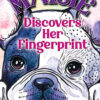Welcome to the CAN blog. I hope you're having a wonderful summer, and I'm happy to be with you today to share the final part of Intimate Storytelling. The topic:
Sentence and Thought Tags
A simple method of improving your writing is learning how to use dialogue tags and presenting character’s thoughts. Though this may seem trivial, these techniques are important in helping you become an author who knows how to write. One way to approach this is to ask yourself how would a real person say this or do this. Then bring that to life by using the following techniques.
The first example can be found in presenting introspection. To create the most intimate form of storytelling, pay attention to your own thoughts and see how they fall. When thinking, do you say "What is that child going to do now, I wonder?" or "He’s going to hurt himself, I thought." Obviously the I wonder and I thought are for the reader information. The phrases have nothing to do with the character’s thoughts. When you add these phrases, it removes the intimate relationship between the reader and character. It’s as if the character is saying, "Okay dummy, I’m thinking this or I’m wondering this." Readers are not dumb so we don’t need to tell them it’s a thought. Everything that comes from that character that’s not dialogue is really the character’s thought or viewpoint.
Why did I say that to her? She already knows how I feel yet I brought up the topic again. I’m digging a hole for myself. I’m putting up a barricade, and that’s not what I want to do.
As you read those lines, it’s obvious that the character is thinking. Authors have no need to tell the reader that’s what the character is thinking or that’s what he’s wondering. So begin today removing italics from the character’s thoughts and removing phrases like he wondered and he thought.
Next, dialogue tags also remove intimacy from the story, because, once again, their purpose is so the reader knows who’s speaking. The only two words that readers will skim over and not be jerked from the story are said and asked. When authors use queried, replied, questioned, screamed, remarked, yelled, teased, they are showing an editor they are not an experienced author. For one, the language that is used in the sentence needs to stand on it’s own. If the character is yelling, the words should let the reader know they are yelling or screaming. If the character is toying with another character, the words should let us know that they are teasing. This is weak writing when an author says: okay, this is funny or this is angry. Let the words speak for themselves. The other words I listed—replied, remarked, insisted—all jump out at an editor and readers, pulling them away from the story. No one wants to do that.
Even worse is using an adverb along with the said or asked. This is a sure sign of a new writer who doesn’t know how to create dialogue that speaks for itself. "Stop," he said angrily. "You look as sweet as a kitten," he said tenderly. "Look at me. I’m successful," he said boisterously. The reader would be stupid not so know that "Look at me. I’m successful" is not boisterous. Let the words show the reader the emotion involved and don’t tell them. Remember "show and not tell" is a key message for all writers.
Finally if you are an experienced novelist with numerous books under your belt, try writing a novel without using dialogue tags or at least try cutting as many as you can. The tag distances the character from the reader so anything you can do to avoid them creates a more intimate novel. How can you do that? By including an action, description or emotion. Here’s an example:
Jane slipped off her sweater and tossed it on the chair. "I’m sorry I’m late."
"So am I." John’s skin prickled as he monitored his frustration. She knew how import this evening was to him.
"What did I miss?"
Perspiration beaded on his palms. What did I miss. Nothing but the best speech he’d ever given. "Do you have to ask?"
"John, I know you wanted me there, but–"
"But you couldn’t drag yourself away from cocktails with your coworkers."
She shook her head, evading his eyes. "That’s not it at all."
Then what was it? That’s what he wanted to know. His eyes shifted from her face to her dark red dress that clung to her curves. The deep V-neck revealed her creamy skin beneath. Ice dripped through his veins. The dress seemed inappropriate for work.
A chill rolled down his back as his mind slipped into a place he didn’t want to go. He studied her face. Guilt? Remorse? Fear? His stomach churned as reality struck him. Jane was having an affair.
Notice that I’ve avoided dialogue tags and the use of wondered or thought yet it’s clear who’s speaking. This is closer to real life conversation, and the more real you write the more real your characters are to your readers.
Give some of these techniques a try, and hopefully you will deepen characterization while making your storytelling more intimate and by doing that, you’ve captured another reader who’ll want to read every one of your novels.

